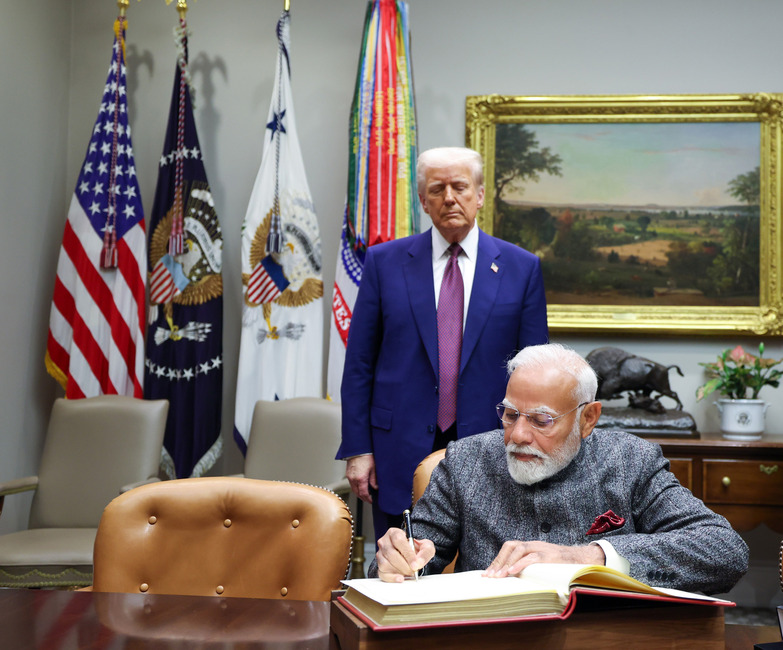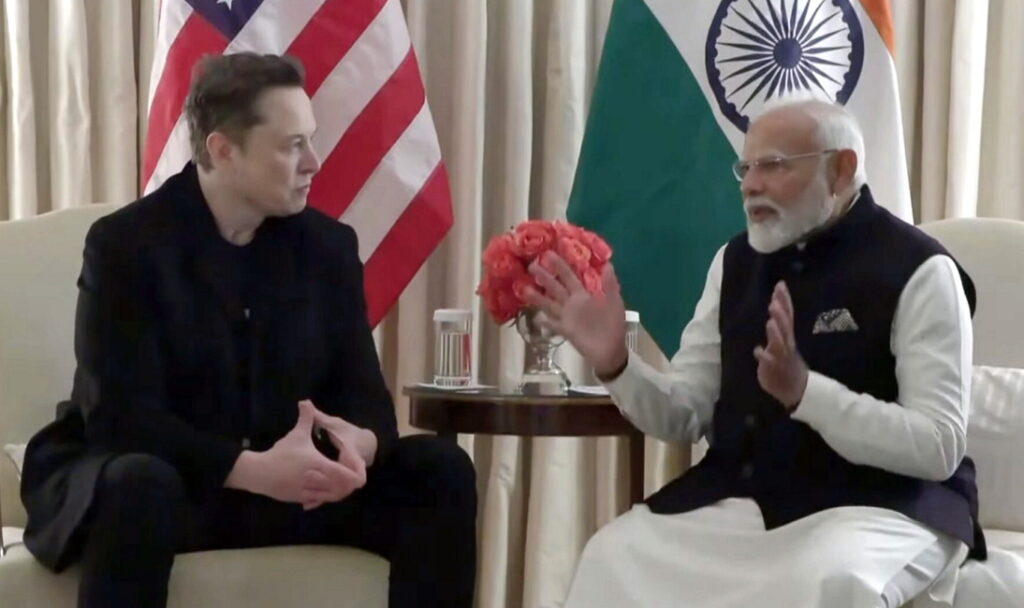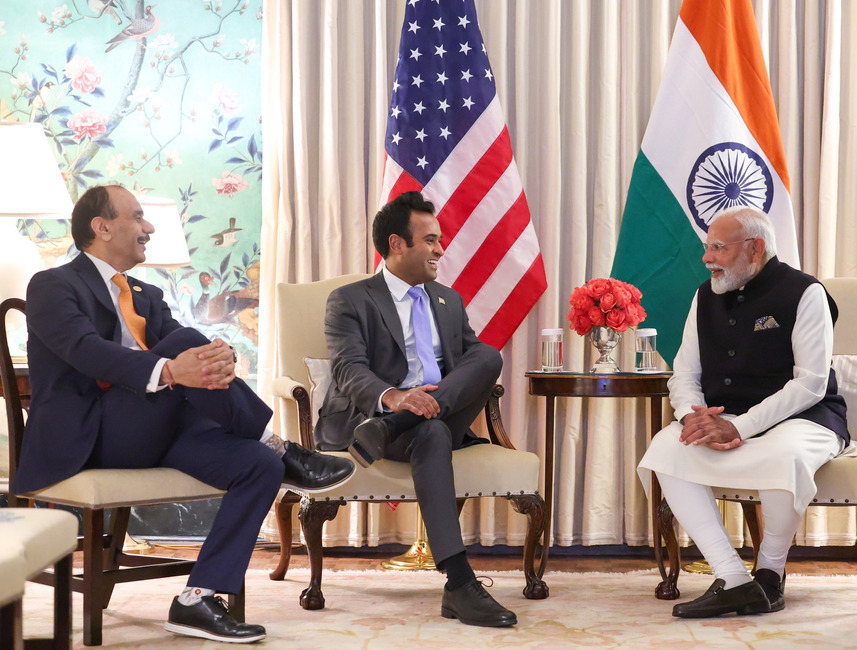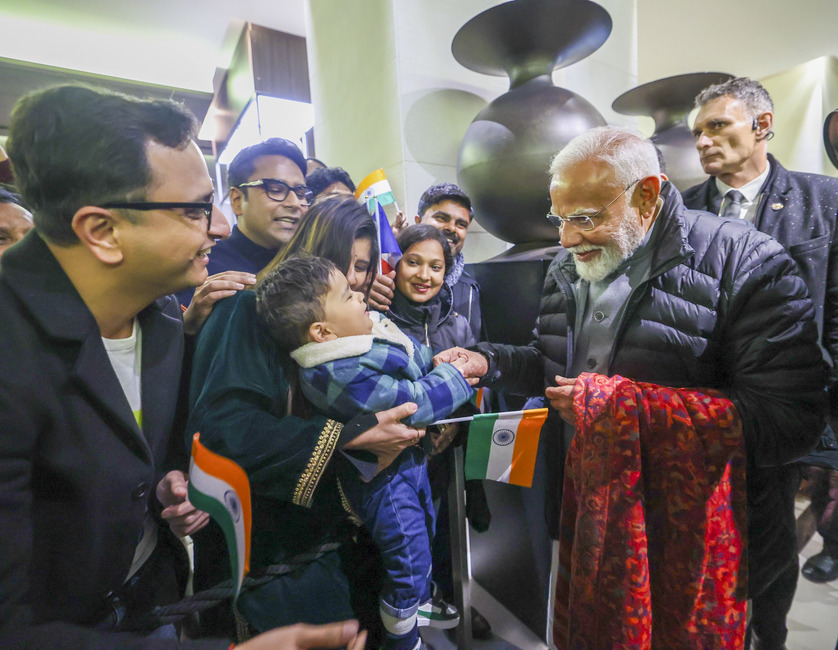
The early days of the Trump 2.0 administration are significantly different from the US President’s first term, but the first meeting between him and Modi seems to indicate that Indo US ties will broadly maintain the continuity of the past decade
After being sworn into the Oval Office on January 20, 2025, Donald Trump has been cranking out Executive Orders at such a pace that they have triggered a host of uncertainties, impacting the established order, both domestically and globally. His aggressive posture on tariffs, immigration, international humanitarian and military aid, reducing the presence of US troops stationed at European bases as part of NATO commitments, and H1B visas, among others, is forcing allies and partner countries to recalibrate their approach in dealing with the US. Against this backdrop, Prime Minister Narendra Modi’s US visit over February 13-15 — the first during Trump’s second term— marked an important chapter in Indo-US relations. The two leaders discussed a range of bilateral issues as a new world order unfolds. The key takeaway from the meeting of the two leaders is that the two most consequential democracies in the world underlined the commitment to strengthen their economic, defence, and strategic ties.
As has become the norm on Modi’s foreign visits, the Indian American community greeted the Prime Minister enthusiastically outside Blair House in Washington, DC, braving harsh winter conditions. Inside the White House, Modi and Trump engaged in discussions on various critical issues.
Trade was a central topic, with both leaders aiming to address the trade imbalance between the two nations. Trump emphasised the need for fair and reciprocal trade, while Modi highlighted the potential for American businesses in India’s growing economy. However, uncertainties surrounding US trade and tariffs relating to India remained unresolved, posing risks for the Indian economy.
The meeting resulted in small concessions, such as cuts to tariffs on bourbon and Harley-Davidson motorcycles. Despite India making symbolic concessions, Trump remained adamant on imposing reciprocal tariffs. At present India imposes a 15% tariff on US imports, while goods entering the US are taxed at just 4%. According to Reuters, a 10% tariff on Indian exports to the US will result in a 50-60 basis point impact on the GDP growth rate.
Defence cooperation was another focal point of the discussions. India, a significant buyer of American military equipment, sought to expand its defence ties with the United States, especially in view of regional security concerns. The Trump administration responded positively, agreeing to strengthen defence collaboration. Specific agreements included the possibility of India purchasing more US oil, gas, and defence equipment, though detailed specifics were lacking. The most significant was Trump’s offer to sell the fifth-generation F 35 fighter aircraft to India for the first time.
Energy cooperation also featured prominently in the talks. The US, having solidified its position as a leading exporter of oil and natural gas, views India as a key market. Discussions highlighted the potential for energy deals that would not only create jobs but also provide India with reliable energy sources.
However, specific agreements on energy imports were not detailed during the visit. Technology and innovation were other key areas of interest, particularly concerning the H1B visa program, which affects thousands of Indian professionals working in the US. While no policy changes were announced, both leaders acknowledged the contributions of Indian professionals to the US economy.

Modi met a cross-section of key US policy influencers and politicians like Elon Musk and Vivek Ramaswamy to get a better understanding of the new dynamic unfolding under the Trump 2.0 administration
Specific agreements included the possibility of India purchasing more US oil, gas, and defence equipment, though detailed specifics were lacking. The most significant was Trump’s offer to sell the fifth-generation F 35 fighter aircraft to India for the first time
Additionally, Modi held a meeting with Tesla CEO Elon Musk, discussing topics such as space, mobility, technology, and innovation. The discussions included opportunities for deepening cooperation in emerging technologies and entrepreneurship. Tesla has been trying to enter the Indian market for a long time, but high import duties on completely built units (CBUs) have been a deterrent. In the past, Musk has sporadically expressed interest in setting up a Tesla manufacturing facility in India.
According to various news reports, citing White House sources, illegal immigration also featured prominently in the talks between the two leaders. Since coming to office, deporting illegal immigrants has been one of Trump’s top priorities, while Modi impressed upon the US President the need to grant H1B visas to skilled professionals to work in the IT sector in the US, which will be beneficial for both countries.
At the joint press conference, Modi stressed the need for dialogue and engagement for eliminating illegal human trafficking. He also said that India was ready to take back any verified Indian who had entered the US illegally. Trump declared that the friendship between India and the US had never been stronger, while Modi reinforced the sentiment by emphasising their partnership based on mutual trust, shared values, and a commitment to a better world.
As Modi concluded his visit and departed for India, analysts reflected on the outcomes. While some uncertainties remained, the visit reinforced the foundation for a deeper strategic partnership. Political observers noted that Modi’s meeting with Trump set the tone for a new chapter in bilateral relations, focusing on mutual economic growth, security, and global leadership. The visit underscored India’s growing influence on the world stage and cemented its role as a key US ally in the years to come.
However, it is important to note that during their meeting, Trump and Modi avoided discussing human rights or the treatment of minorities, focusing instead on weapons sales and trade. This omission reflects a trend during Trump’s presidency of prioritising interest-based foreign policies over values-based concerns such as human rights.
Prime Minister Narendra Modi’s 2025 visit to the United States and his meeting with President Donald Trump highlighted the ongoing efforts to strengthen the partnership between the two nations. While challenges persist, the commitment to collaboration in areas such as trade, defence, energy, and technology signals a promising trajectory for future relations.


People belonging to the Indian American community braved the cold to greet Modi outside the Blair House in Washington DC
It is important to note that during their meeting, Trump and Modi avoided discussing human rights or the treatment of minorities, focusing instead on weapons sales and trade. This omission reflects a trend during Trump’s presidency of prioritising interest-based foreign policies


Add Comment